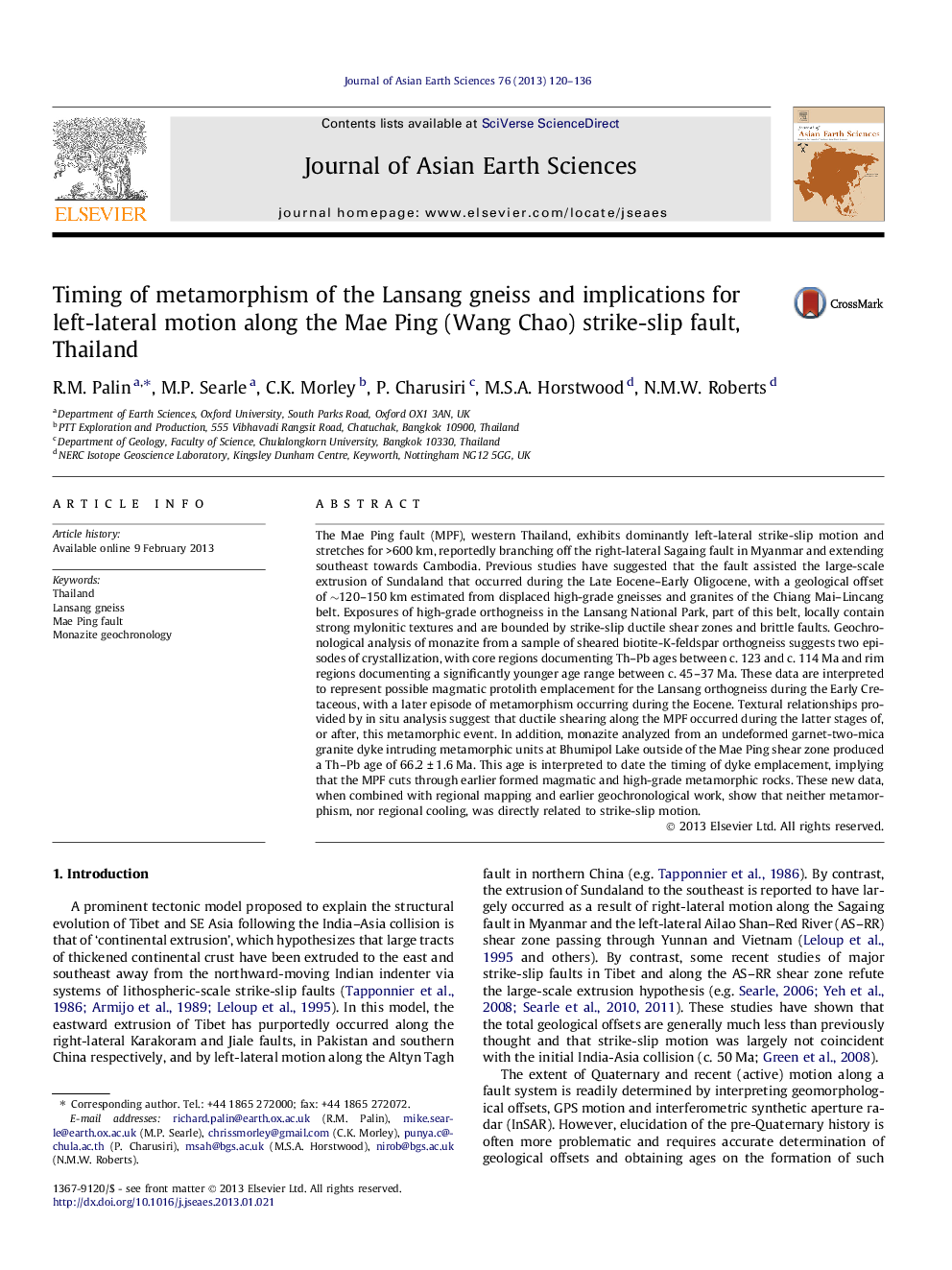| کد مقاله | کد نشریه | سال انتشار | مقاله انگلیسی | نسخه تمام متن |
|---|---|---|---|---|
| 4731021 | 1640391 | 2013 | 17 صفحه PDF | دانلود رایگان |
The Mae Ping fault (MPF), western Thailand, exhibits dominantly left-lateral strike-slip motion and stretches for >600 km, reportedly branching off the right-lateral Sagaing fault in Myanmar and extending southeast towards Cambodia. Previous studies have suggested that the fault assisted the large-scale extrusion of Sundaland that occurred during the Late Eocene–Early Oligocene, with a geological offset of ∼120–150 km estimated from displaced high-grade gneisses and granites of the Chiang Mai–Lincang belt. Exposures of high-grade orthogneiss in the Lansang National Park, part of this belt, locally contain strong mylonitic textures and are bounded by strike-slip ductile shear zones and brittle faults. Geochronological analysis of monazite from a sample of sheared biotite-K-feldspar orthogneiss suggests two episodes of crystallization, with core regions documenting Th–Pb ages between c. 123 and c. 114 Ma and rim regions documenting a significantly younger age range between c. 45–37 Ma. These data are interpreted to represent possible magmatic protolith emplacement for the Lansang orthogneiss during the Early Cretaceous, with a later episode of metamorphism occurring during the Eocene. Textural relationships provided by in situ analysis suggest that ductile shearing along the MPF occurred during the latter stages of, or after, this metamorphic event. In addition, monazite analyzed from an undeformed garnet-two-mica granite dyke intruding metamorphic units at Bhumipol Lake outside of the Mae Ping shear zone produced a Th–Pb age of 66.2 ± 1.6 Ma. This age is interpreted to date the timing of dyke emplacement, implying that the MPF cuts through earlier formed magmatic and high-grade metamorphic rocks. These new data, when combined with regional mapping and earlier geochronological work, show that neither metamorphism, nor regional cooling, was directly related to strike-slip motion.
► In situ analysis of monazite provides constraints on motion of the Mae Ping fault.
► Evidence for Langsang gneiss magmatic protolith emplacement between c. 123–114 Ma.
► Garnet-two-mica granite dyke sampled from Bhumipol Lake intruded at 66.2 ± 1.6 Ma.
► Prograde metamorphism during c. 45–37 Ma in the Lansang region produced orthogneiss.
► Motion along Mae Ping fault initiated at end of, or after, this metamorphic event.
Journal: Journal of Asian Earth Sciences - Volume 76, 25 October 2013, Pages 120–136
